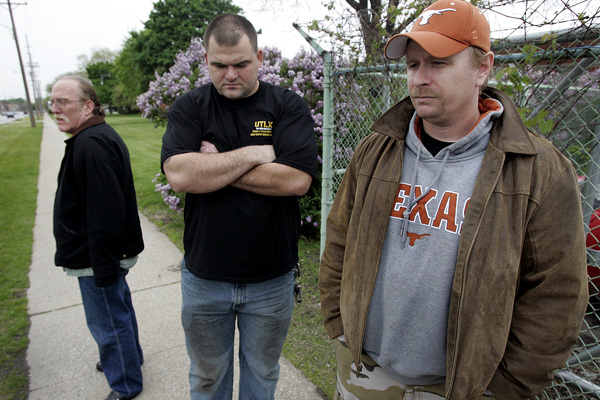
Photo: John Smierciak/Chicago Tribune
August Kapusta, 59, left, Jerry Kroll, 33, and David McCoy, 40, outside the closing Union Tank Car factory, May 30, 2008
The National Opinion Research Council's General Social Survey is a respository of fascinating information, and their recent release of data is no exception, a measure of Americans' optimism about their country and their situation in life. For instance: "This data series highlights the decline in optimism of whites, which reached just 46 percent in 2012–the lowest level in the GSS time series on this measure–and a decline of 21 percentage points since 2006."
Why 2006? "First, whites are responding more pessimistically to the economic outlook, especially during the Great Recession which began in late 2007. Second, blacks responded to Obama’s presidential victory in 2008 with a dramatic upsurge in optimism."
So: Economic recession and black president means hopelessness? No:
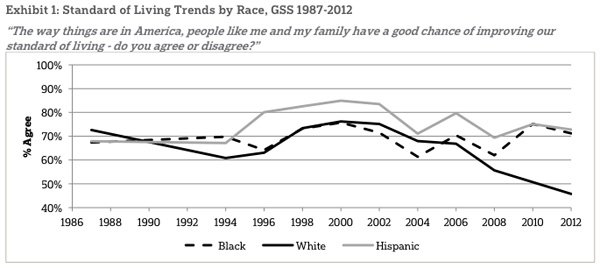
When asked more broadly if everything is good or bad, you get a similar trajectory.
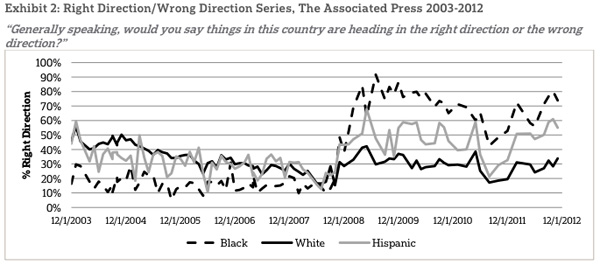
"Right direction" did jump substantially among blacks and Hispanics after Obama's election, just not as much. There's been a downward trend, but nothing like that during the prior administration. The improving economy of the mid-2000s gave "right direction" a small bump, but it didn't last long.
And specifically with regard to the financial situation:
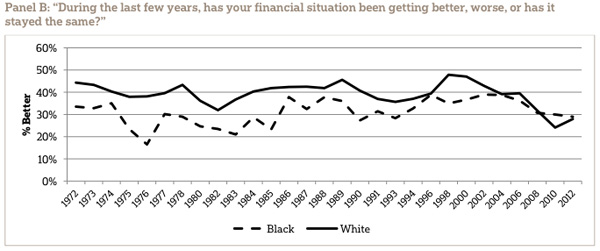
The bubble economy of the mid-2000s arrested the decline briefly, but that's about it, as opposed to the bubble economy of the late 1990s.
Reading between the lines of the study's "objective economic indicators," you can get a sense of what's going on.
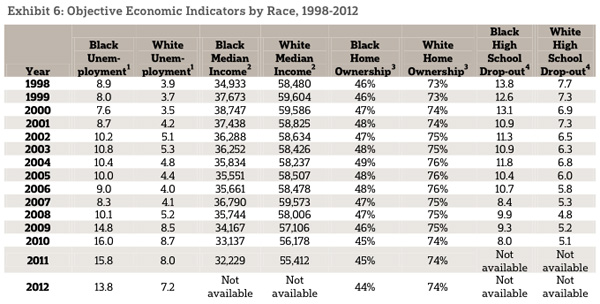
The returns from the housing bubble simply didn't translate to income and employment, and median income continued to slide—for blacks beginning in 2000, for whites beginning in 2001.
Clarence Page has a good column today on the GOP's search for white voters, noting that Romney would have won had he received the same percentage of the white vote Ronald Reagan received in 1984:
What happened to the missing white voters? Democrats asked that same question after 1988, their fifth loss of the previous six national elections. They responded by reconnecting with working-class white "Reagan Democrats" and reoriented their message back to the political center to solve problems, not just present policy arguments.
Those days come to mind in Trende's county-by-county analysis of turnout in the key swing state of Ohio: Romney's worst turnout rates occurred in economically hard-hit rural areas like southeastern Ohio.
Romney made a poor messenger for rural areas, but he was hamstrung by his predecessor, under whom median income and employment barely edged in the right directions as the market boomed. Unemployment for blacks and whites has moved in the right direction since 2010—but the median income continues to decline for both. Both parties will have their eyes peeled for the 2012 stats as 2016 lurks around the corner.


